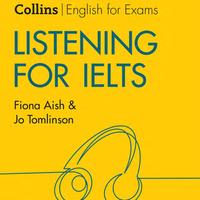11- 83
Anna: So, we need to get this field trip sorted out as soon as possible, don't we?
Suzanne: Yes. Let's get started. James, have you worked out which two countries we should travel to?
James: Well, I thought we could go to the USA and Mexico because that's where the populations of most native languages are concentrated. But then I found out that the three languages we're most interested in are more widely spoken in Canada than Mexico so I think we should go there instead.
S: OK ... Anna, weren't you going to think about our research focus?
A: Yes, and I think I've found two areas that would work well. Firstly, use of the three languages, Na-Dene, Salishan, and Algic among the younger generation - people up to the age of twenty-five. I found out that although there are many older speakers of Algic, it's used much less by the young. In fact, young people under the age of twenty-five use both Na-Dene and Salishan more than Algic.
J: That's interesting. That means that native language use isn't really being affected by the older generations any more.
S: So, what's the other focus area then, Anna?
A: Well, it would be good to try to find out what affects changes in native language speaker populations.
J: You mean things like family life, and the influence of popular culture or tourism?
A: Yes, areas like that, but not tourism or culture because they're too general. Lthink we should look at whether family has an impact in terms of passing on native language use. And possibly the effects of government language policy, too.
S: Government figures can be deceptive, but they're still worth looking at. Maybe we should also focUs on. something like job creation and work statistics and the number of people who leave the USA to live in another country instead.
J: Mm, yes. I think emigration would be useful, as well as language policy. We should look at that, too.
S: OK, then. Let's focus on those three as well as what happens in families.
A: Well, shall we look at our route now? Most of the speakers we're looking for are in California, so we could start there. We can spend two weeks travelling around and meeting people to get some background information and then start collecting data.
S: What do you think about beginning in the south-west corner of the state and stopping in the Barona reservation?
A: That's a good idea. We'll be able to get some interviews with native language speakers there. And then we could go to the eastern mountains to visit the local education authority of North County - they've got a native language project for school children.
J: Why there? Wouldn't it be better to go to the Education Department in San Diego? It's bigger.
A: But they focus more on Spanish and English bilingualism and less on native languages.
J: In that case, the North County Education Authority will be more valuable, so let's do that. After that, we could head south-east to the town of Bishop. There's a company there called Co-Tech, which employs only bilingual speakers. I've emailed the managing director, who's happy to give us an interview.
S: That's great work, James! It sounds like something we should definitely do.
J: Right, well I'll email her to confirm.
A: Also. There's a bilingual town in the south-central area of the region. They have a policy whereby all signs in the town must be in the local language as well as English. We can take photos of these signs- they'll make good visuals for our report. It's a place called Sun City.
S: But won't that be intrusive for the people who live there?
A: No, they're used to it- the village is used as a model for other communities who'd like to do the same thing.
S: In that case, let's add it to the itinerary.

